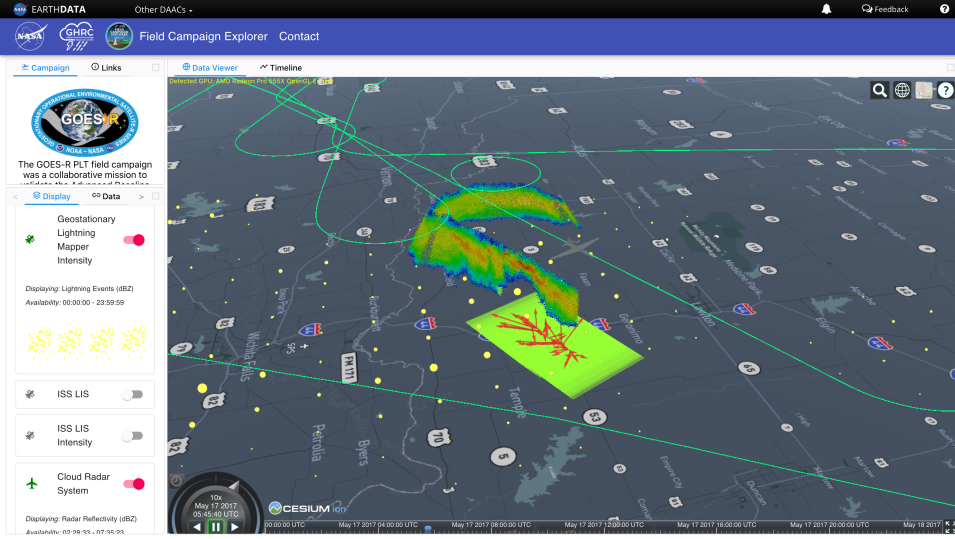For Dr. Geoffrey Stano, chief scientist at NASA's Global Hydrometeorology Resource Center Distributed Active Archive Center (GHRC DAAC), the advantage of field campaigns like the Investigation of Microphysics and Precipitation for Atlantic Coast-Threatening Snowstorms (IMPACTS) and the Hurricane and Severe Storm Sentinel (HS3) is that even though they’re only for a very specific time, they bring a lot of capabilities to bear to investigate a particular issue.
He's not wrong. The IMPACTS field campaign, for example, enlisted NASA ER-2 and P-3 research aircraft outfitted with a suite of instruments, including advanced radar, lidar, a microwave radiometer, microphysics probes, and dropsondes. In addition, the data from these instruments were augmented by data from ground-based radar and rawinsondes, multiple NASA and NOAA satellites, and computer simulations.
Yet, Stano acknowledges that taking advantage of these varied datasets may be a challenge for some users.
"If you're interested in these data but not part of a particular science team, you may not be familiar with the instruments providing all these data. So the question becomes, 'How do I start visualizing and analyzing these datasets?'" he said. "In addition, many of these datasets are three-dimensional datasets, and that adds a layer of complexity when trying to visualize them."
The volume of data field campaigns can generate is another potential issue.
"Although field campaigns aren't producing amounts of data on the order of the Surface Water and Ocean Topography (SWOT) mission or [expected data from the upcoming] NASA-Indian Space Research Organisation (ISRO) Synthetic Aperture Radar (NISAR) mission, we're getting to the point that, if you wanted to process everything, downloading all the data might be difficult for users working with their own computer systems," Stano said.
Given these challenges, data from field campaigns are often underused. To remedy this, the GHRC DAAC developed the Field Campaign Explorer (FCX) data tool to help scientists discover, collect, visualize, and analyze field campaign datasets more rapidly.
